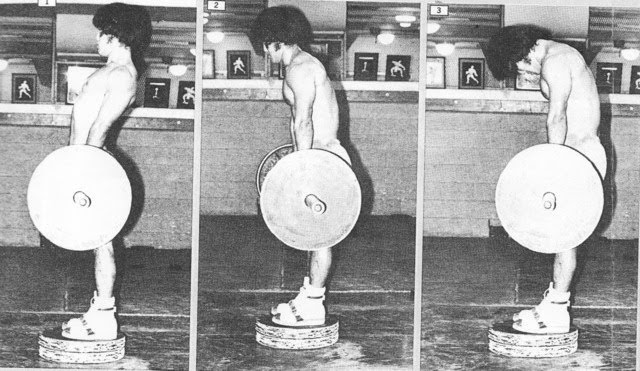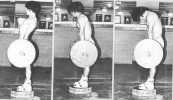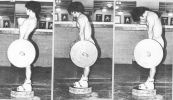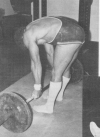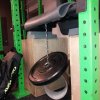Kenny Croxdale
Level 7 Valued Member
Lumbar Training
Below is some interesting information Lumbar Training that I never considered.
Powerlifting makes your muscles stronger - but not the muscles in your lower back
Powerlifters squat and dead lift with considerable weights, but this does not make the muscles in their lower back any stronger. British sports scientists at Southampton Solent University discovered this. Yet we know from experimental studies [PeerJ. 2015;3:e878.] that the development of those muscles counteracts lower back complaints. Should powerlifters who want to protect their lower back include hyper-extensions in their training routines?
Results
In their lab, the researchers used a device like the one below to determine how strong the lower back muscles of the men were. Although the powerlifters were more muscular and stronger across the board than the other men, there was no difference between the strength that the three groups could develop.
Side Not and Post
Below is a picture of the ILEX Machine that is designed to work the Lumbar. It is used in some Physical Therapy program to strengthen this area.
ILEX strength = isolated lumbar extension strength.
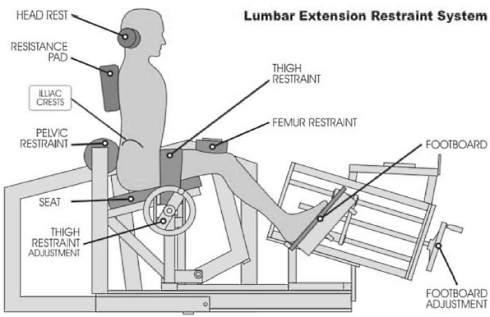
Core Lumbar Strength Machine Demo
This a video demonstrations of the ILEX.
Barbell Isolated Lumbar Extension
This a video demonstrations the free weight way of working the Lumbar.
Article Conclusion
"...Powerlifters may benefit from including specific isolated lumbar extension training."
Source
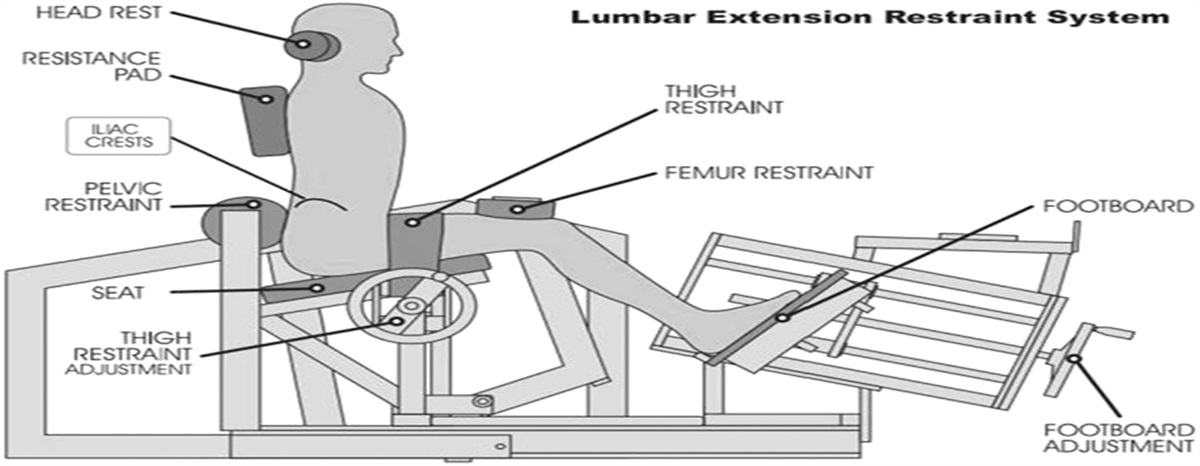
 journals.lww.com
journals.lww.com
Here some more information from this specific research article on Lumbar Training
PRACTICAL APPLICATIONS
There is currently little evidence showing that progressively increasing strength in the powerlifts, especially the squat and deadlift, will increase lumbar extensor strength. Furthermore, research suggests that most forms of training that do not restrain the pelvis likely are suboptimal for conditioning the lumbar extensors. As such, although effective in developing strength in the specific lifts, coaches and exercise professionals should at present not prescribe nor promote the squat and deadlift, as well as their derivatives, as effective exercises to strengthen the lumbar extensors. It is unclear the exact impact that specifically training the lumbar extensors has on powerlifting performance itself. However, if a goal is to specifically target and attempt to strengthen the lumbar extensors, powerlifters may benefit from including specific ILEX training. Powerlifters may also benefit from including kettlebell swings to their training, but further research is required to properly understand the effect kettlebell swings may have on lumbar extensor strength.
Let's break this down some more.
For a muscle to be worked, it needs to be flexed and then contracted. The ILEX Machine provide more isolation on working the Lumbar Spine that allows it to flex (round) and then contract (straighten).
Controversial Lumbar Exercises
I realize these are controversial exercise. However, they appear to engage and work the Lumbar Muscle to some degree.
With that in mind, if someone has back issues, they might not be something to consider. They are exercise that you need to go slow with, starting out with very light loads. And as the saying goes, "If it hurts, don't do it".
With that said, it appears these lower back rounding type free weight exercise may be beneficial for Lumbar heath and strength. Exercises like Round Back Stiff Leg Deadlifts (slight beak in the knees), Deficit Deadlifts standing on something like a coke crate (the lower position usually require some back rounding to break the weight off the floor), Good Mornings with some Thoracic (Upper) Back rounding (some Lumbar rounding is going to happen), Rounded Back/Hip Extension Raises, Deficit Straddle Squats with a Kettlebell, T-Bell or Hungarian Core Blaster (some lower back rounding may occur in the bottom part of the movement, as Deficit Deadlifts); which happens with me.
Below is some interesting information Lumbar Training that I never considered.
Powerlifting makes your muscles stronger - but not the muscles in your lower back
Powerlifters squat and dead lift with considerable weights, but this does not make the muscles in their lower back any stronger. British sports scientists at Southampton Solent University discovered this. Yet we know from experimental studies [PeerJ. 2015;3:e878.] that the development of those muscles counteracts lower back complaints. Should powerlifters who want to protect their lower back include hyper-extensions in their training routines?
Results
In their lab, the researchers used a device like the one below to determine how strong the lower back muscles of the men were. Although the powerlifters were more muscular and stronger across the board than the other men, there was no difference between the strength that the three groups could develop.
Side Not and Post
Below is a picture of the ILEX Machine that is designed to work the Lumbar. It is used in some Physical Therapy program to strengthen this area.
ILEX strength = isolated lumbar extension strength.

Core Lumbar Strength Machine Demo
This a video demonstrations of the ILEX.
Barbell Isolated Lumbar Extension
This a video demonstrations the free weight way of working the Lumbar.
Article Conclusion
"...Powerlifters may benefit from including specific isolated lumbar extension training."
Source

Comparison of Isolated Lumbar Extension Strength in... : The Journal of Strength & Conditioning Research
mance in a plethora of sports. Aside from its effect on sport performance, low-back strength is strongly associated with low-back pain. A sport that heavily involves the lower-back musculature is powerlifting. This study looked to compare isolated lumbar extension (ILEX) strength in competitive...
Here some more information from this specific research article on Lumbar Training
PRACTICAL APPLICATIONS
There is currently little evidence showing that progressively increasing strength in the powerlifts, especially the squat and deadlift, will increase lumbar extensor strength. Furthermore, research suggests that most forms of training that do not restrain the pelvis likely are suboptimal for conditioning the lumbar extensors. As such, although effective in developing strength in the specific lifts, coaches and exercise professionals should at present not prescribe nor promote the squat and deadlift, as well as their derivatives, as effective exercises to strengthen the lumbar extensors. It is unclear the exact impact that specifically training the lumbar extensors has on powerlifting performance itself. However, if a goal is to specifically target and attempt to strengthen the lumbar extensors, powerlifters may benefit from including specific ILEX training. Powerlifters may also benefit from including kettlebell swings to their training, but further research is required to properly understand the effect kettlebell swings may have on lumbar extensor strength.
Let's break this down some more.
For a muscle to be worked, it needs to be flexed and then contracted. The ILEX Machine provide more isolation on working the Lumbar Spine that allows it to flex (round) and then contract (straighten).
Controversial Lumbar Exercises
I realize these are controversial exercise. However, they appear to engage and work the Lumbar Muscle to some degree.
With that in mind, if someone has back issues, they might not be something to consider. They are exercise that you need to go slow with, starting out with very light loads. And as the saying goes, "If it hurts, don't do it".
With that said, it appears these lower back rounding type free weight exercise may be beneficial for Lumbar heath and strength. Exercises like Round Back Stiff Leg Deadlifts (slight beak in the knees), Deficit Deadlifts standing on something like a coke crate (the lower position usually require some back rounding to break the weight off the floor), Good Mornings with some Thoracic (Upper) Back rounding (some Lumbar rounding is going to happen), Rounded Back/Hip Extension Raises, Deficit Straddle Squats with a Kettlebell, T-Bell or Hungarian Core Blaster (some lower back rounding may occur in the bottom part of the movement, as Deficit Deadlifts); which happens with me.
Last edited:

